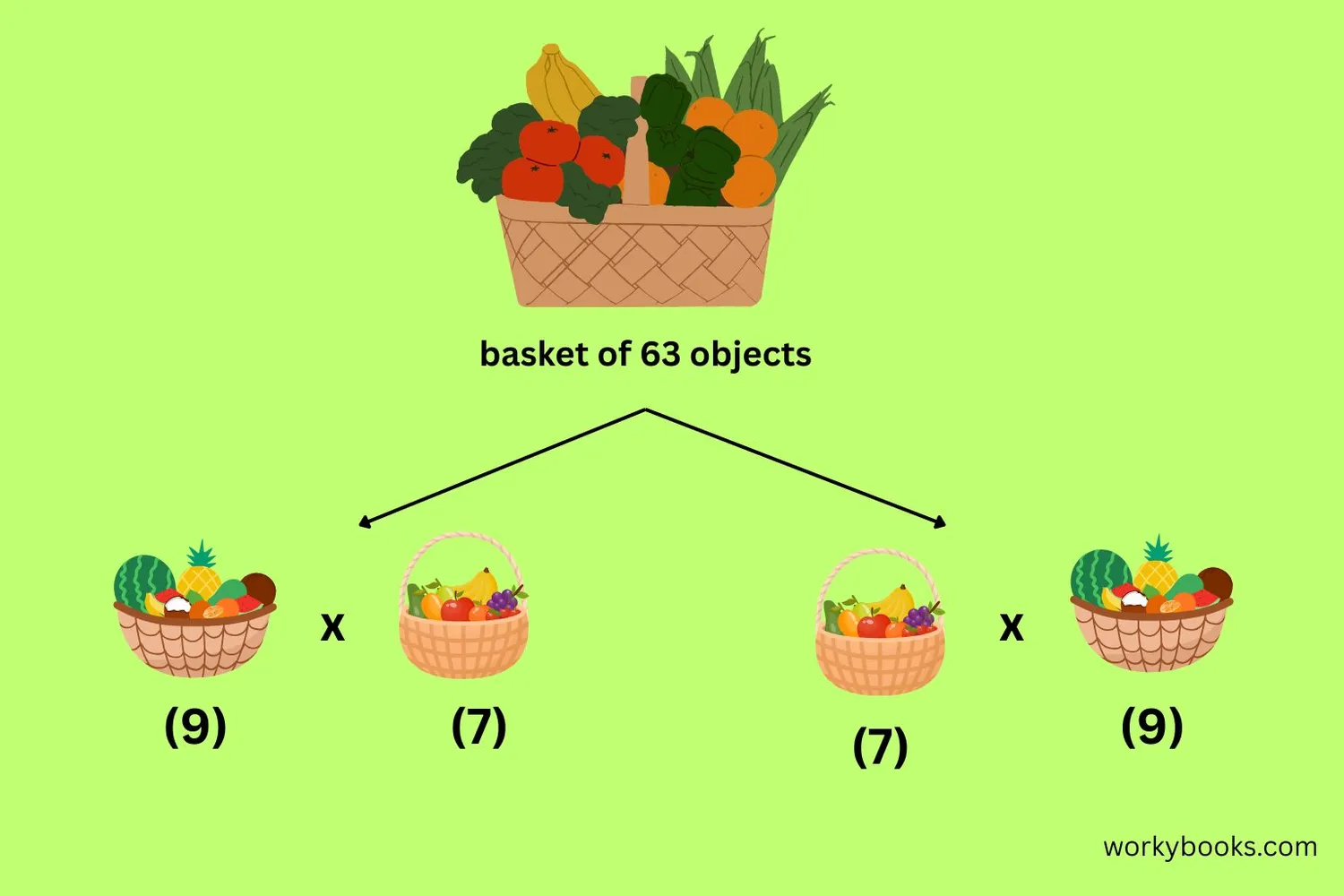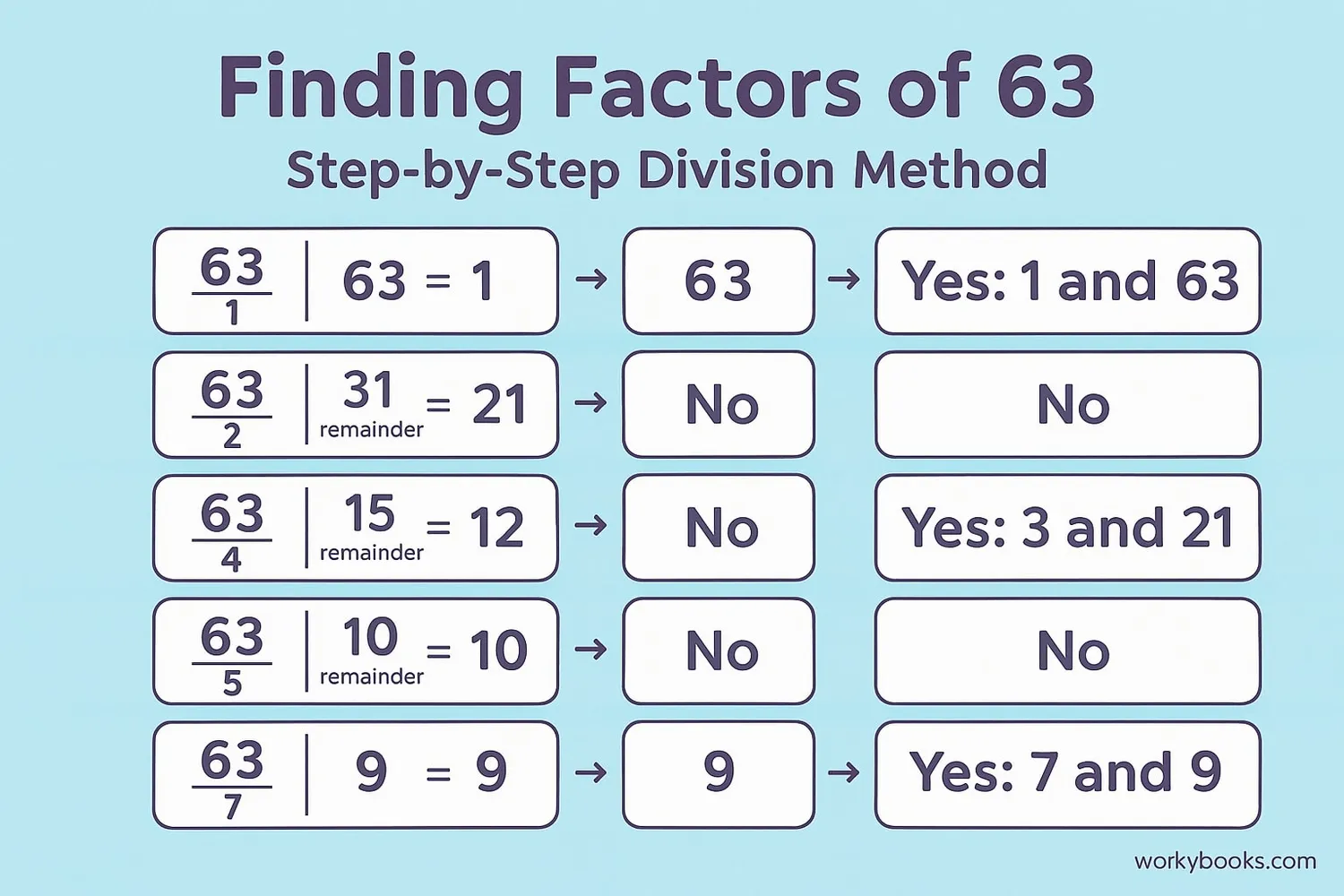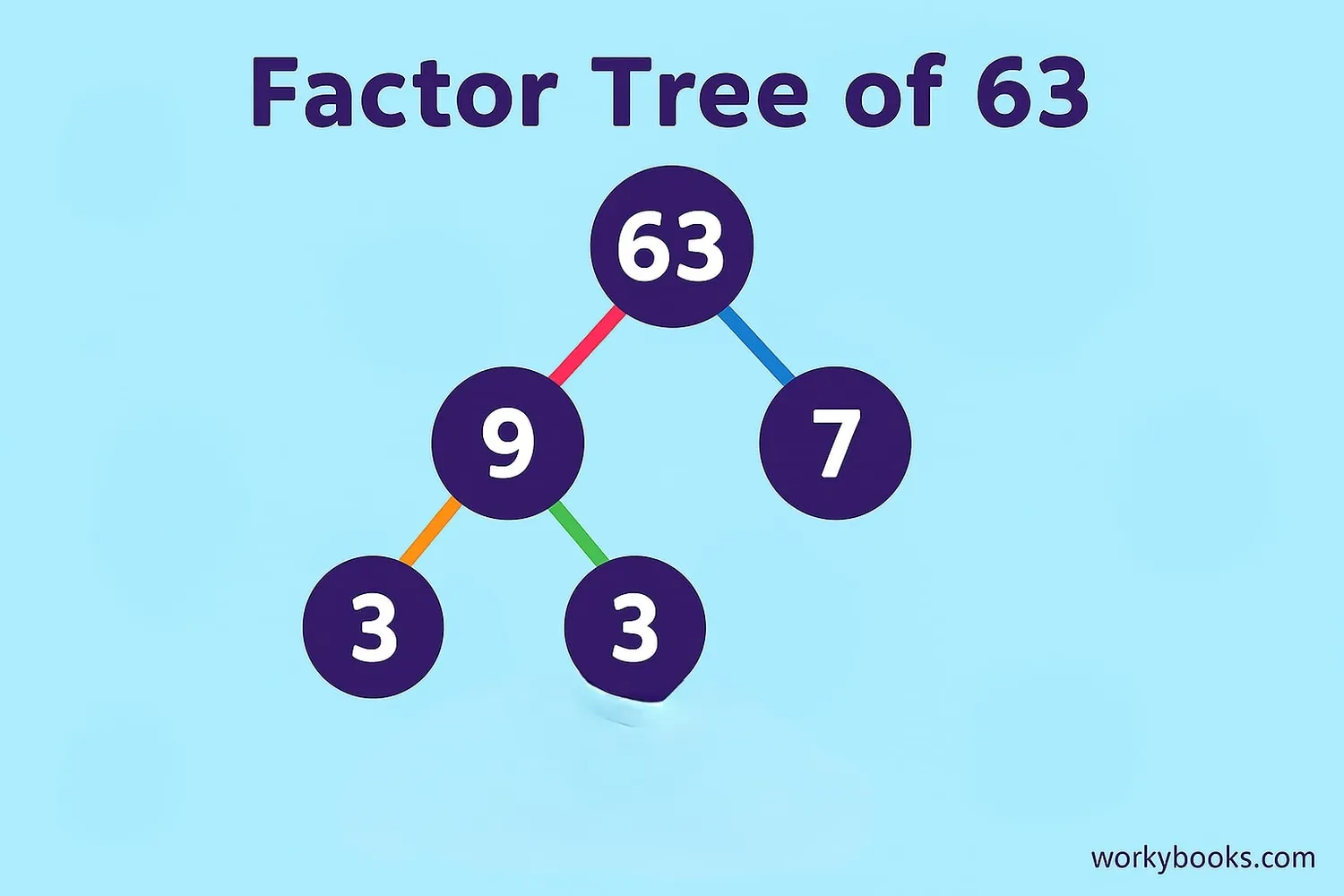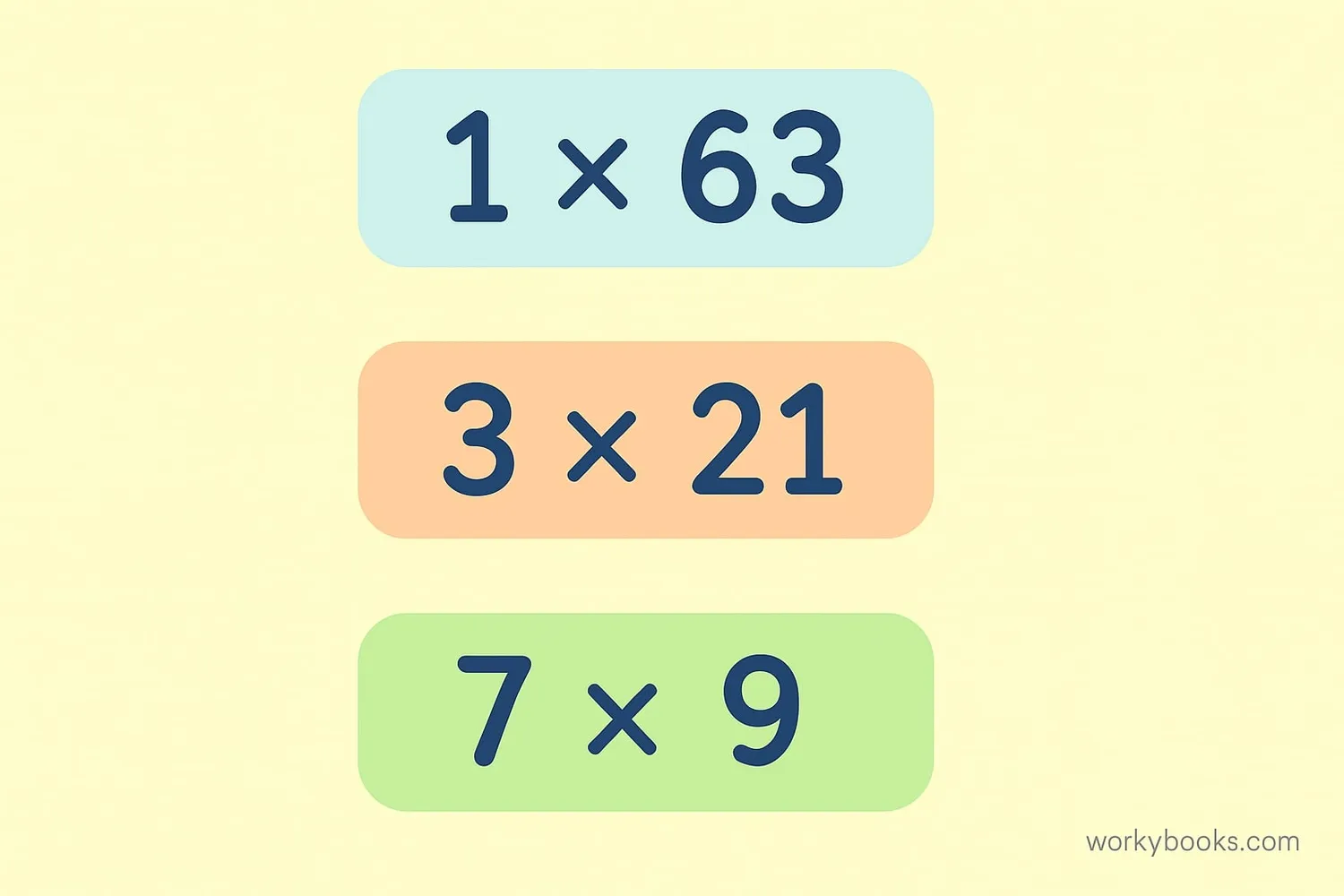Factors of 63 - Definition, Examples, Quiz, FAQ, Trivia
Learn how to find factors, understand factor pairs, and master prime factorization
What are Factors?

Factors are numbers that divide evenly into another number without leaving a remainder. For example, the factors of 63 are the numbers that multiply together to give 63.
Think of factors as the numbers that perfectly fit into 63 when we divide. For instance:
63 ÷ 7 = 9 (with no remainder), so 7 is a factor of 63.
63 ÷ 8 = 7.875 (not a whole number), so 8 is not a factor.
Key Concept
Every number has at least two factors: 1 and itself. Since 63 is a composite number, it has more than two factors.
How to Find Factors of 63

There are two main methods to find factors of a number: the division method and the multiplication method.
Division Method
Divide 63 by whole numbers starting from 1 up to 63. If the division gives a whole number result with no remainder, both the divisor and the quotient are factors.
| Division | Result | Is Factor? |
|---|---|---|
| 63 ÷ 1 | 63 | Yes (1 and 63) |
| 63 ÷ 2 | 31.5 | No |
| 63 ÷ 3 | 21 | Yes (3 and 21) |
| 63 ÷ 4 | 15.75 | No |
| 63 ÷ 5 | 12.6 | No |
| 63 ÷ 6 | 10.5 | No |
| 63 ÷ 7 | 9 | Yes (7 and 9) |
Remember
You only need to check numbers up to the square root of 63 (about 7.94) because factors repeat after that point.
Prime Factorization of 63

Prime factorization means breaking down a number into its prime factors. Prime factors are prime numbers that multiply together to make the original number.
We can use a factor tree to find the prime factors of 63:
-
63
-
9
- 3
- 3
- 7
-
9
From this factor tree, we see that:
or written with exponents: 63 = 3² × 7
Prime Factor
Prime factors of 63 are 3 and 7. Notice that 3 appears twice (3²) because 3×3=9, and 9 is a factor of 63.
Factor Pairs of 63

Factor pairs are two numbers that multiply together to give the original number. For 63, we have both positive and negative factor pairs.
Positive Factor Pairs
Negative Factor Pairs
Negative factors also exist because multiplying two negative numbers gives a positive product:
Factor Pair Tip
Notice that factor pairs come in two orders (like 3×21 and 21×3), but they represent the same pair of numbers.
Factors of 63 Quiz
Test your knowledge about factors of 63 with this 5-question quiz.
Frequently Asked Questions
Here are answers to common questions about factors of 63:
Math Trivia
Discover interesting facts about numbers and factors:
Ancient Number Theory
The study of factors dates back to ancient Greek mathematicians. Euclid's "Elements" written around 300 BCE contains fundamental theorems about prime numbers and factorization.
63 in Science
63 is the atomic number of Europium, a rare earth metal used in television screens and fluorescent lamps. It's named after the continent of Europe.
63 in Space
Messier object M63 is the Sunflower Galaxy, a spiral galaxy in the constellation Canes Venatici. It's about 27 million light-years from Earth and contains about 400 billion stars!
Largest Known Prime
The largest known prime number has over 24 million digits! Prime numbers are numbers with exactly two factors, making them the building blocks of all whole numbers.





